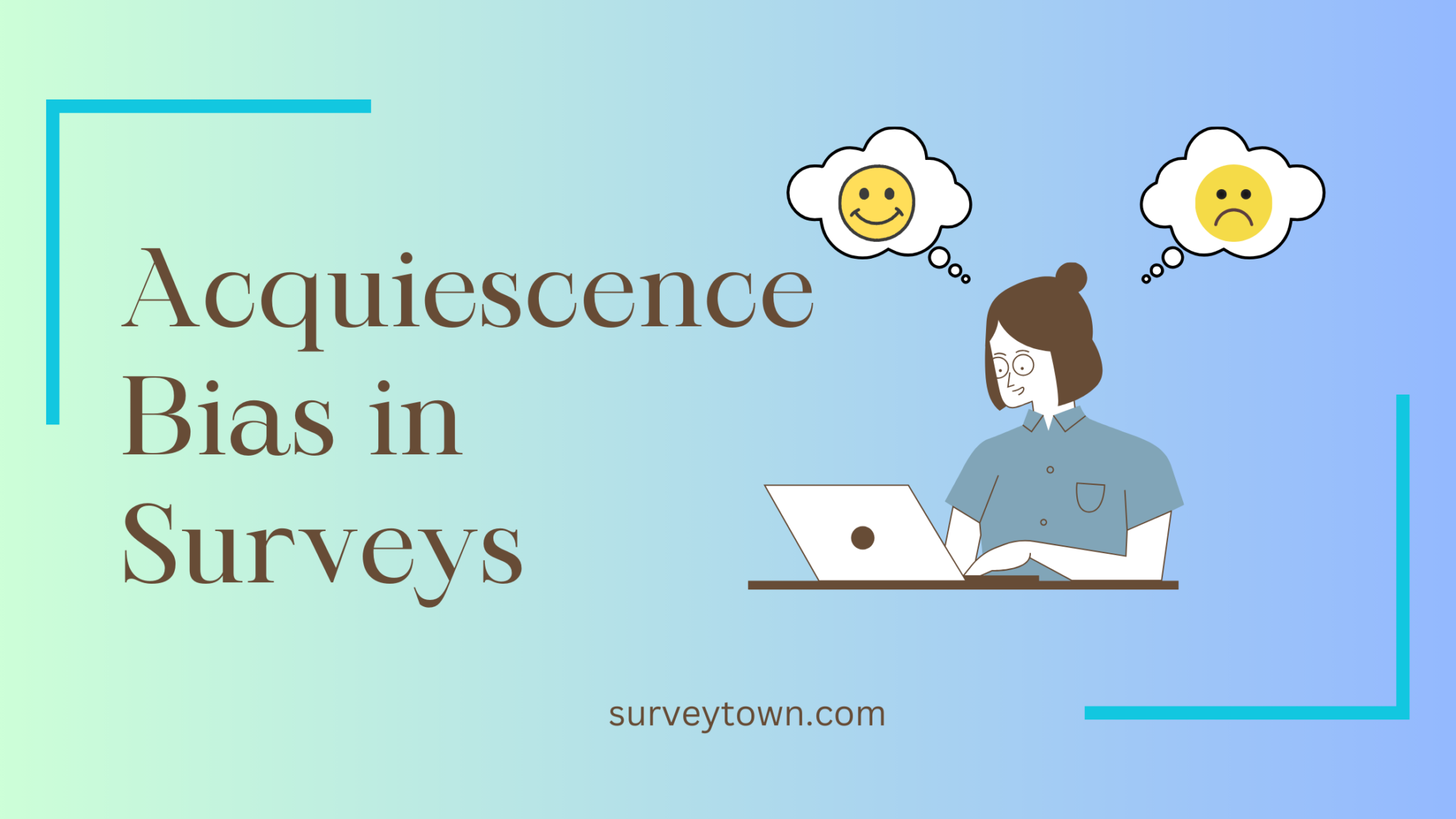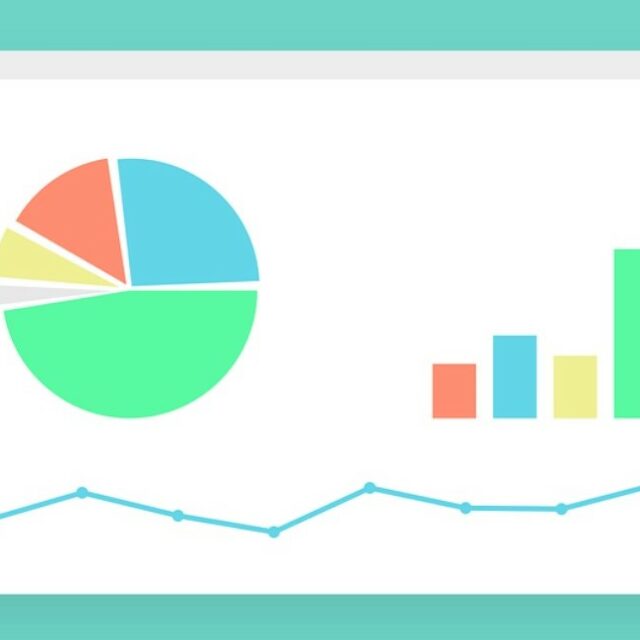Welcome to our expert guide on acquiescence bias, a fascinating phenomenon that greatly impacts the accuracy and reliability of survey data. As seasoned researchers ourselves, we understand the importance of unraveling this intricate web of biases to ensure trustworthy results.
Click here to discover more about survey bias and its other types!
At its core, acquiescence bias is one among many response biases that plague surveys. It occurs when respondents have a natural inclination to agree or say “yes” to questions, regardless of their true beliefs or opinions. This tendency can throw off your entire research project and lead you down a path of skewed conclusions.
To truly grasp the essence of acquiescence bias, let’s dive into its definition and explanation. Picture this: You’re conducting a customer satisfaction survey where participants are asked if they would recommend your product or service. Here’s where it gets interesting – due to acquiescence bias, some individuals may feel compelled to answer positively even if they had negative experiences.
But why does this happen? The psychological basis behind acquiescence bias lies in our innate desire for social acceptance and harmony. Respondents fear being judged negatively if they disagree with popular opinions or go against the grain. Consequently, they tend to err on the side of agreement rather than expressing their genuine thoughts.
Now that we’ve shed light on how acquiescence bias manifests itself in real-world scenarios, it’s time to explore its profound impact on survey results. Brace yourself as we uncover why addressing this issue effectively is crucial for both researchers like yourself and organizations seeking reliable insights.
Unveiling the Impact of Acquiescence Bias on Survey Results
Prepare to delve into the intricate world of survey biases, where acquiescence bias reigns as one of the most prevalent culprits. This particular type of response bias possesses a remarkable ability to sway survey results, making it imperative for researchers and survey designers to grasp its inner workings.
1. The Distorting Effects of Acquiescence Bias:
- Picture this: respondents with an inherent tendency towards agreement, regardless of their true beliefs or opinions. These individuals are more likely to respond with a resounding “yes” or agreeable nod, even when their hearts may say otherwise.
- As you can imagine, such biased responses lead to inflated agreement rates and distorted data. Consequently, accurately assessing respondents’ genuine attitudes and behaviors becomes an arduous task.
- Beware! Acquiescence bias has another trick up its sleeve—it masks genuine differences among respondents by creating a deceptive sense of consensus.
2. The Far-Reaching Consequences of Biased Survey Data:
- Brace yourself for the repercussions! Biased survey data undermines research findings’ validity and reliability, casting doubt upon the overall quality of studies.
- Decision-makers who rely on flawed data risk implementing ineffective strategies or misguided policies that could have detrimental effects.
- Organizations placing blind faith in inaccurate survey results jeopardize their performance by making ill-informed business decisions.
3. Real-Life Case Studies Exposing Acquiescence Bias:
- Let’s start with a company’s consumer satisfaction survey—a seemingly flawless endeavor until unusually high agreement rates emerged across all evaluated aspects. Further investigation revealed that respondents possessed an overwhelming inclination towards agreeing without critically evaluating their experiences.
- Now picture a political opinion poll conducted during an election campaign—participants exhibited higher agreement rates when confronted with controversial issues due to social desirability concerns rather than expressing their genuine views.
By examining these compelling examples, researchers gain a profound understanding of the dire need to effectively address acquiescence bias. Only then can accurate insights be extracted from surveys, illuminating the path towards knowledge and truth.

Spotting Acquiescence Bias in Surveys – Expert Tips
Acquiescence bias is a sneaky culprit that can compromise the accuracy and dependability of survey data. As a seasoned researcher, it’s crucial to be able to identify telltale signs of acquiescence bias in survey responses. By recognizing these indicators, you can take proactive measures to minimize its impact. Here are some key red flags to watch out for:
1. Agreement Tendency:
One glaring sign of acquiescence bias is an overwhelming agreement tendency among respondents. They may consistently agree with statements or questions without giving careful thought to their genuine opinions.
2. Lack of Differentiation:
Another giveaway is the lack of variation in responses. When respondents are affected by this bias, they tend to provide similar ratings or answers across different items, regardless of their actual beliefs or experiences. This can be problematic when conducting surveys as it skews the data and undermines the accuracy of the research.
3. Response Patterns:
Pay close attention to response patterns within your surveys. If there’s an excessive number of “yes” or positive responses compared to neutral or negative ones, it could indicate the presence of acquiescence bias.
4. Reverse-Coded Items:
In certain cases, incorporating reverse-coded items can help uncover and mitigate acquiescence bias effectively. These are questions that require respondents to answer contrary to their usual agreement tendency, providing more accurate insights into their true opinions.
To detect and address this pesky bias head-on, consider employing these techniques:
1. Randomized Response Technique (RRT):
Shake things up by injecting random noise or ambiguity into your survey questions through RRT methodology. This makes it challenging for respondents influenced by acquiescent tendencies to consistently agree with all statements.
2. Balanced Questionnaires:
Craft well-balanced questionnaires that present an equal number of positively and negatively worded items. This helps reduce biased responses stemming from agreement tendencies.
3. Demographic Analysis:
Dive deep into demographic factors such as age, gender, education level, and more. Analyzing these variables can provide valuable insights into whether certain groups are more susceptible to exhibiting acquiescence bias. Armed with this knowledge, you can tailor your survey design and analysis accordingly.
It’s important to note that while these techniques aid in identifying acquiescence bias, they may not completely eradicate its effects. To achieve robust results, researchers should adopt a comprehensive approach that combines multiple strategies to minimize the impact of this bias on survey outcomes.
By staying vigilant for signs of acquiescence bias and implementing appropriate detection techniques, you’ll unlock more accurate insights from surveys and make well-informed decisions based on reliable data. In the next section, we will delve into effective strategies for mitigating acquiescence bias during survey design and implementation.
Expert Strategies to Minimize Acquiescence Bias in Surveys
When it comes to conducting surveys, minimizing the impact of acquiescence bias is crucial for obtaining accurate and reliable data. As an expert in the field, I have compiled a list of strategies that will help you reduce the likelihood of this bias and ensure your survey results are truly representative.
1. Carefully design your surveys:
The way you structure your survey questions plays a significant role in respondents’ tendency to agree or say “yes” indiscriminately. To avoid this, consider these expert tips:
- Use clear and concise language: Make sure your questions are easy to understand without any ambiguous terms or jargon.
- Avoid leading or loaded questions: Phrasing a question in a way that suggests a preferred answer can lead to biased responses. Keep your questions neutral and unbiased.
- Provide balanced response options: Offer a range of choices that cover both positive and negative perspectives, allowing respondents to express their true opinions.
2. Incorporate reverse-scored items:
One effective technique for counteracting acquiescence bias is by including reverse-scored items in your survey. These are questions where the response options are reversed compared to other questions in the survey. By incorporating such questions, you create an opportunity for participants who tend towards agreement bias to provide more accurate responses.
3. Randomize response options:
One effective strategy to enhance the quality of survey responses is by randomizing the order in which response options appear within each question. This approach helps prevent respondents from developing patterns or habits when selecting their answers based solely on position. By implementing this technique, you can avoid potential biases that may arise from respondents simply agreeing with or avoiding certain options due to their placement. It allows for a more accurate representation of what your audience truly thinks and feels.
4. Consider forced-choice formats:
In certain situations, using forced-choice formats can greatly benefit the survey process by minimizing acquiescence bias. Instead of simply agreeing or disagreeing with a statement, respondents are presented with two equally plausible options and must carefully consider their choice. This approach is highly effective in avoiding the tendency for respondents to agree with statements without thoughtful consideration.
5. Conduct pilot testing and pretesting surveys:
Before launching your survey on a larger scale, it is crucial to conduct pilot tests with a small sample group that accurately represents your target audience. This step allows you to gain valuable insights into what works best for your specific survey and avoid any potential issues, such as acquiescence bias. By identifying and addressing these concerns early on, you can significantly enhance the validity of your survey.
6. Implement diverse sampling techniques:
Random sampling techniques are particularly useful in achieving this goal as they ensure a representative mix of participants from different backgrounds and perspectives. By including individuals with varying opinions and experiences, you can minimize the impact of systematic biases on your survey results. For example, let’s say you are conducting a survey about customer satisfaction with a new product. If you only target customers who have already expressed positive feedback or those who align with your desired outcome, you may inadvertently introduce acquiescence bias into your findings. However, by using random sampling methods that include both satisfied and dissatisfied customers, you create an opportunity for more balanced responses.
By implementing these expert strategies, you can significantly reduce the influence of acquiescence bias in your surveys and obtain more accurate data. Remember that careful survey design and thoughtful consideration of response options are key to effectively mitigating this type of response bias. Trust in my expertise as an industry professional to guide you toward obtaining reliable insights from your surveys.
The Crucial Role of Data Analysis in Combating Acquiescence Bias
Data analysis is a vital component in the fight against acquiescence bias, ensuring that survey results are accurate and reliable. By utilizing advanced statistical methods and cutting-edge analytics, researchers can effectively identify and address the presence of acquiescence bias within their data.
1. Unveiling and Adjusting for Acquiescence Bias through Statistical Methods:
- A commonly employed technique involves using reverse-scored items. These cleverly crafted questions force respondents who have a tendency to agree with everything to disagree, providing a more accurate reflection of their true opinions.
- Factor analysis is another powerful tool that helps uncover underlying factors or dimensions within survey responses. This enables researchers to differentiate between genuine agreement and mere acquiescent responses.
- Researchers may also leverage item response theory (IRT) modeling techniques to estimate individual respondent tendencies toward acquiescence.
2. The Significance of Data Cleaning in Survey Research:
- Thorough data cleaning is essential before conducting any analysis as it involves identifying and rectifying errors, inconsistencies, outliers, or any other issues that could compromise data quality.
- Techniques such as checking for missing values, outliers, duplicate entries, and logical inconsistencies play a crucial role in ensuring accurate results.
3. Harnessing Advanced Analytics to Combat Acquiescence Bias:
- Advanced analytics techniques like machine learning algorithms prove invaluable in detecting patterns associated with acquiescent responses.
- By training models on extensive datasets where known biases have been removed or adjusted for, these algorithms become adept at accurately identifying potential instances of acquiescence bias.
- Additionally, predictive modeling approaches can be utilized to estimate respondent tendencies towards excessive agreement based on various demographic factors.
Data analysis serves as an indispensable weapon against acquiescence bias by equipping researchers with valuable insights into its presence within survey responses. Through the application of statistical methods, meticulous data cleaning, and advanced analytics techniques, researchers can effectively identify and address acquiescence bias. By employing these strategies, survey researchers can ensure the accuracy and reliability of their findings while minimizing the impact of acquiescence bias on their results.
Conclusion: Overcome Acquiescence Bias & Enhance Your Surveys
As experienced researchers, we know how crucial it is to avoid acquiescence bias in surveys. This bias can seriously affect the reliability and validity of your research findings. In this section, I’ll share valuable insights on identifying and preventing acquiescence bias for accurate and meaningful survey results. To start, let’s understand what acquiescence bias is and why it happens. It’s when people tend to agree or say “yes” more often than necessary in response to survey questions. This can be due to social desirability, a desire for consistency, or simply not being engaged with the survey content. To prevent acquiescence bias in your surveys:
- Use balanced scales: Include both positive and negative statements in your questionnaire, so respondents have to carefully consider each one before answering.
- Randomize response options: Mix up the order of response options within each question to avoid any order effects that might influence participant behavior.
- Provide clear instructions: Clearly communicate the purpose of your survey at the beginning and offer guidance on how respondents should interpret and respond to different types of questions.
- Include reverse-coded items: Add statements that require disagreement or opposing views to identify those who mindlessly agree with everything.
- Consider different response formats: Use multiple-choice, Likert scales, and open-ended questions to diversify how respondents express their opinions.
- Pilot test your survey: Test it with a small sample before launching it on a larger scale, allowing you to spot any issues or biases in design.
Remember that preventing acquiescence bias requires ongoing monitoring and refinement of your surveys based on respondent feedback. By implementing these strategies, you’ll enhance the quality and reliability of your research findings while gaining valuable insights into your target audience’s thoughts and opinions.




